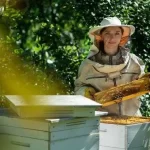Japan Is Giving Washington 250 New Cherry Trees to Replace Those to Be Lost in Construction Work
The post Japan Is Giving Washington 250 New Cherry Trees to Replace Those to Be Lost in Construction Work appeared first on Healthy Holistic Living.
In a gesture that underscores the enduring bond between Japan and the United States, Japan has announced a gift of 250 cherry trees to Washington, D.C., aimed at replenishing the iconic landscape of the capital’s Tidal Basin. This generous donation coincides with extensive construction efforts intended to repair the area’s deteriorating seawall. The announcement was made by Japanese Prime Minister Fumio Kishida during his official visit to the White House, where President Joe Biden hosted him for a state dinner. The trees are not only a symbolic nod to the deep-rooted friendship between the two nations but also mark the upcoming 250th anniversary of the United States in 2026.
The cherry trees, with their resplendent blossoms, have long served as more than just a picturesque adornment to Washington, D.C.’s landscape. Dating back to the initial gift of 3,000 trees from Japan in 1912, these trees have become emblematic of beauty, friendship, and international camaraderie. Each spring, their delicate blooms transform the capital city into a vibrant tapestry of pink and white, attracting throngs of visitors from across the globe who come to witness their breathtaking spectacle.
In essence, the cherry trees serve as a living testament to the enduring strength of the relationship between Japan and the United States. Their blossoms symbolize not only the arrival of spring but also the renewal of commitment to shared values, mutual understanding, and cooperation in the face of evolving global challenges. As they continue to grace the Tidal Basin with their beauty, the cherry trees stand as a reminder of the power of nature to bridge divides and foster unity among nations.
The Enduring Legacy of Washington D.C.’s Cherry Trees
The cherry trees of Washington, D.C. hold a significant place in the city’s landscape and in the hearts of those who visit the Tidal Basin each spring. Originating from a gift of 3,000 trees from Japan in 1912, First Lady Helen Herron Taft and Viscountess Chinda, wife of the Japanese ambassador, initially planted these trees, symbolizing the blossoming relationship between the two nations. Over the years, this gift has grown into one of Washington’s most cherished traditions, heralding the spring with vibrant displays of pink and red blossoms that attract spectators from around the globe.
The tradition of the cherry blossoms extends beyond their visual splendor, becoming a cornerstone of cultural exchange and international goodwill. These trees serve not just as a reminder of the historical ties but also as a living monument to the ongoing friendship and strategic partnerships that have evolved between Japan and the United States. The cherry blossoms have become a metaphor for renewal and continuity, mirrored by the countries’ enduring alliance in various global arenas.
As these trees age and the landscape of the Tidal Basin changes, particularly with the impending construction work meant to fortify the crumbling seawall, the significance of replenishing these trees becomes even more profound. The decision to introduce new saplings ensures that this symbolic gesture continues to inspire and bring joy to future generations, maintaining a legacy that extends well beyond the blooms themselves.
Preserving a Cultural Landmark
Amid concerns over the structural integrity of the Tidal Basin’s seawall, the need for extensive renovations has become urgent. This 107-acre manmade reservoir, famed for housing the highest concentration of cherry trees in the area, faces issues due to years of wear and environmental impact. The restoration project, valued at $133 million, aims to rebuild and reinforce the seawall to prevent future deterioration. This undertaking, however, necessitates the removal of some of the older, more vulnerable cherry trees—a decision that has prompted a significant response from both local enthusiasts and international partners.
The response from Japan was swift and generous following the announcement of the construction plans. Understanding the cultural and historical importance of these trees, the Japanese government offered to replenish the Tidal Basin with 250 new cherry trees. This gesture not only emphasizes the strong ties between Japan and the U.S. but also highlights the importance of preserving such a pivotal cultural landmark. These new saplings are expected to thrive and contribute to the basin’s legacy, ensuring that the annual cherry blossom festival continues to enchant visitors for decades to come.
This proactive approach by Japan illustrates a commitment to maintaining and enhancing the shared cultural heritage symbolized by the cherry blossoms. It reflects a deep understanding of the role that these trees play not just in beautifying the capital but in fostering a sense of community and continuity amidst change. The effort to preserve the cherry blossoms is also a reflection of broader environmental and cultural conservation efforts, crucial for maintaining the identity and ecological balance of urban spaces.
Sowing Seeds of Harmony Amidst Change
Amidst the clangor of machinery and the flux of urban development, the symbolic gesture of introducing fresh saplings not only revitalizes the natural landscape but also signifies a steadfast dedication to upholding the historical significance and cherished traditions of the Tidal Basin. It is a tangible expression of resilience in the face of change, showcasing a harmonious blend of past and present.
Furthermore, the act of preservation through the planting of new cherry trees embodies a deeper commitment to fostering unity and understanding between nations. Japan and the United States, through this joint endeavor, reaffirm their shared values of cultural heritage and environmental stewardship. In the midst of global uncertainties and shifting geopolitical dynamics, this collaborative effort serves as a beacon of hope and solidarity, demonstrating the enduring strength of international partnerships.
Beyond mere symbolism, the planting of new cherry trees embodies a profound sense of continuity and renewal. It symbolizes a collective commitment to nurturing harmony amidst transformation, ensuring that the legacy of cultural exchange and mutual respect endures for generations to come. In sowing the seeds of harmony amidst change, Japan and the United States reaffirm their dedication to preserving not just a landscape, but a shared heritage of friendship and cooperation.
A Blossoming Future
The symbolism of the cherry trees extends well into the realms of diplomacy and international relations, showcasing the strength and resilience of the U.S.-Japan alliance. The recent gift from Japan, coinciding with discussions on security in the Pacific, underscores the strategic depth of this relationship. During his visit, Prime Minister Fumio Kishida emphasized the cherry blossom-like bond between the two nations, suggesting it will continue to flourish in the Indo-Pacific and beyond. This sentiment was mirrored by President Biden, who, alongside highlighting the historical significance of the trees, used the occasion to affirm the nations’ joint commitment to stability and cooperation in the region.
The new saplings, set to be planted as part of the Tidal Basin’s renovation, symbolize the ongoing renewal of the U.S.-Japan partnership. They are a commitment to future generations, a promise of maintaining and strengthening ties through shared values and mutual respect. As these trees grow and blossom, they will stand as a testament to the enduring friendship and the collaborative spirit that define the ties between Washington and Tokyo.
In conclusion, the cherry trees are more than just a gift of nature; they are a profound diplomatic gesture, a source of national pride, and a cornerstone of cultural exchange. Their continued presence in Washington, D.C., ensures that each spring not only brings a spectacular display of natural beauty but also a renewed appreciation for the deep-rooted friendship that thrives between Japan and the United States. As the Tidal Basin prepares to welcome these new cherry trees, it stands ready to continue its role as a beloved landmark, celebrating the enduring spirit of international cooperation and cultural appreciation.
Cultural and Environmental Stewardship Through Cherry Trees
The cherry trees around Washington, D.C.’s Tidal Basin are more than just aesthetic enhancements; they embody a commitment to environmental stewardship and cultural preservation. As these trees are integrated into the landscape, they bring with them an opportunity to educate the public about the importance of sustainable practices and the role of flora in urban environments. This initiative offers a platform for discussing issues such as climate resilience and biodiversity, making the cherry trees a cornerstone in the environmental education of residents and visitors alike.
Moreover, the ongoing care and expansion of the cherry tree population in the capital are key to maintaining the ecological balance of the area. The trees help to improve air quality, reduce urban heat island effects, and provide habitat for local wildlife, all of which contribute to the health and sustainability of the urban environment. This aspect of the cherry tree tradition highlights the intersection of beauty, utility, and ecological responsibility.
By actively participating in the preservation and expansion of the cherry trees, both the U.S. and Japan demonstrate a shared commitment to environmental and cultural stewardship. This initiative not only preserves the historical and aesthetic value of the Tidal Basin but also serves as a model for international cooperation in environmental conservation efforts. The continued growth of these trees symbolizes a hopeful future for global partnerships in sustainability and cultural exchange.
Practical Tips for Cherry Blossom Enjoyment and Conservation
Enjoying and preserving the cherry blossoms at the Tidal Basin involves a collaborative effort between visitors, local authorities, and international partners. To ensure that these iconic trees continue to thrive and inspire, here are some practical tips for both enjoyment and conservation:
Visit responsibly: Plan your visit during off-peak times to avoid overcrowding. Additionally, utilize public transportation or walk to the site to reduce traffic congestion and pollution. Furthermore, ensure to stay on designated paths to protect the roots and ground around the trees.
Engage in educational programs: Participate in guided tours to learn about the history and ecological importance of the cherry trees. Moreover, attend workshops and talks hosted by environmental groups and cultural organizations.
Support conservation efforts: Contribute to funds aimed at the preservation and care of the cherry trees. Additionally, volunteer for local clean-up days to keep the Tidal Basin area pristine. Furthermore, advocate for policies and practices that enhance urban green spaces and biodiversity.
Promote sustainable tourism: Choose eco-friendly accommodations and services when visiting Washington, D.C. Moreover, spread awareness by sharing your responsible travel practices on social media. Additionally, encourage others to respect the natural and cultural significance of the cherry blossoms.
By adhering to these guidelines, visitors can help ensure that the cherry blossoms remain a source of beauty and inspiration for generations to come. These actions not only contribute to the preservation of the trees themselves but also to the broader goal of promoting environmental stewardship and cultural appreciation worldwide.
Strengthening Bonds Through Nature’s Beauty
The recent contribution of 250 cherry trees from Japan to Washington, D.C. serves as a vibrant testament to the enduring friendship and alliance between Japan and the United States. This act of generosity not only revitalizes a significant cultural and natural landmark in the U.S. capital but also reinvigorates the bonds between these two powerhouse nations. As these trees are planted and begin to flourish, they will symbolize the resilience and ongoing cooperation that characterize the U.S.-Japan relationship.
Moreover, the cherry trees are not just a gift of nature; they are a strategic element in diplomatic relations, reflecting a mutual commitment to environmental stewardship and the celebration of shared values. Every spring, as the cherry blossoms peak, they draw attention not only to the beauty of nature but also to the deep cultural connections that such gifts foster. This annual blooming can be seen as a renewal of the promise between the nations to continue their collaboration in various spheres.
The planting of new cherry trees around the Tidal Basin also addresses broader themes of global environmental concerns and urban ecological balance. It demonstrates how international partnerships can play a crucial role in local conservation efforts, thereby setting an example for global cooperation towards sustainable development. The trees thus become a beacon of how cultural diplomacy and environmental policy can intersect and flourish.
These cherry trees stand as a symbol of hope and renewal. They remind us of the power of international friendships and the importance of nurturing these relationships through thoughtful, symbolic gestures that resonate across generations. As Washington, D.C. prepares to witness the growth of these new saplings, it also prepares to continue its role as a stage for showcasing the strength and beauty of international cooperation.
The post Japan Is Giving Washington 250 New Cherry Trees to Replace Those to Be Lost in Construction Work appeared first on Healthy Holistic Living.
Related posts:
 Stop Eating These Ten American Foods That Are Banned in Other Countries
Stop Eating These Ten American Foods That Are Banned in Other Countries
 Japan Has an Alarming 66% Lower Breast Cancer Rate than the United States – Here is the Key Nutrient You’re Missing
Japan Has an Alarming 66% Lower Breast Cancer Rate than the United States – Here is the Key Nutrient You’re Missing
 Leydy Pech: The Mayan Beekeeper Who Battled Monsanto and Triumphed for Nature
Leydy Pech: The Mayan Beekeeper Who Battled Monsanto and Triumphed for Nature
 9 “Facts” You Learned In School That Are No Longer True
9 “Facts” You Learned In School That Are No Longer True
 Doomsday Clock Is Closest It’s Ever Been To Armageddon In 2024 Update
Doomsday Clock Is Closest It’s Ever Been To Armageddon In 2024 Update
Powered by YARPP.







